|


Has your control arm gust lock pin been
missing in action for years? Long since lost?
Well here is a solution from CSOBeech visitor
Eric I., who found a great pin solution and combined it with an excellent choice
in a REMOVE BEFORE FLIGHT flag.
The NTSB files are full of fatalities due to
forgotten and possibly homemade control locks. Here are two important things
that I like to remember about control locks:
1. DO NOT construct any control lock without
having an obnoxious REMOVE BEFORE FLIGHT streamer
in plain view. 
2. Before flight use your
CHECKLIST! Every before flight checklist I have
ever seen includes the item: "Flight Controls Free and Clear"! This is the place
in the run up or pre-engine start that one exercises the flight controls to
confirm free, correct and clear movement.

Here is Eric's Bonanza Gust/Control Lock
narrative:
I just picked up my 1962 Debonair and one of the many things
missing was a gust lock. For the first few days I used a cheap give-away type
ball point pen. Worked good enough, but I wanted something better; solid,
sturdy.
I saw some suggestions online and I was at Lowe's looking for
the 5/16 rod when I ran across the PERFECT solution. I was in the Hardware
aisle, passing the big drawers of specialty hardware and my eye caught a glimpse
of what looked to be a perfect solution: 5/16" x2-3/4" Wire Lock Pin. This is
the type of pin used to hold towing hitch ball assemblies in the receivers. It
is
Lowes PN: 218518 and is about $4.
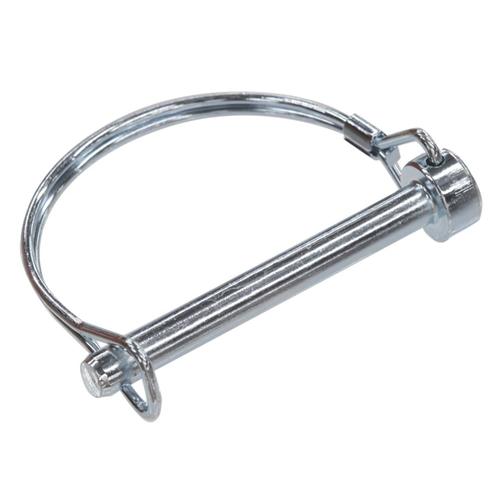
I went out to my plane today and it fit like a glove. It slid
in firmly, but not too tight. It locked the controls very solidly. I made sure
to get the one with the round wire clip, not the square clip. It snaps around
the yoke shaft and holds the pin very securely. I made a makeshift flag until I
can get a proper "remove before flight" flag made.
Here's Eric's REMOVE
BEFORE FLIGHT Flag install:



The REMOVE BEFORE FLIGHT
flag is part number 13-05612 from Aircraft Spruce ($10.65). I'm sure you could
just as easily use a $2 version. When I saw this one come out of the package I
thought "My gosh, that's huge!" But then I thought that I'd NEVER miss taking it
out, and I'm only into this thing for $15, so shut your pie-hole and be happy!!
We had some windy days recently (20-30MPH) and everything
seems to have held up great.
Here's the early Baron B55
Factory Control Lock design, that I have repaired and kept serviceable because
they are quite rare to find, especially the Mixture control guard and the rudder
pedal locking pin. Big thanks to Stuart S. for sending me the rudder pedal pin
that I was missing when I got my Baron.
PS: I have since touched up the
engine control levers with black hobby shop paint and they came out very nice
(see below)!


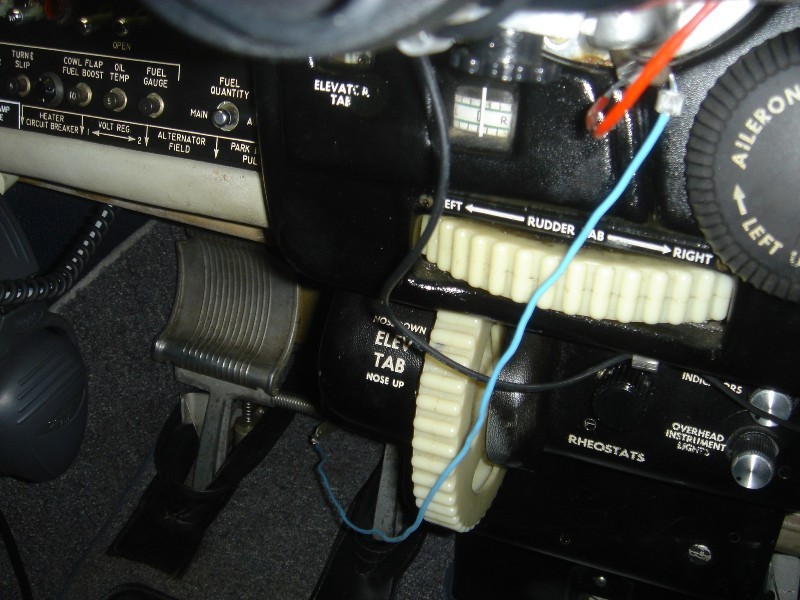
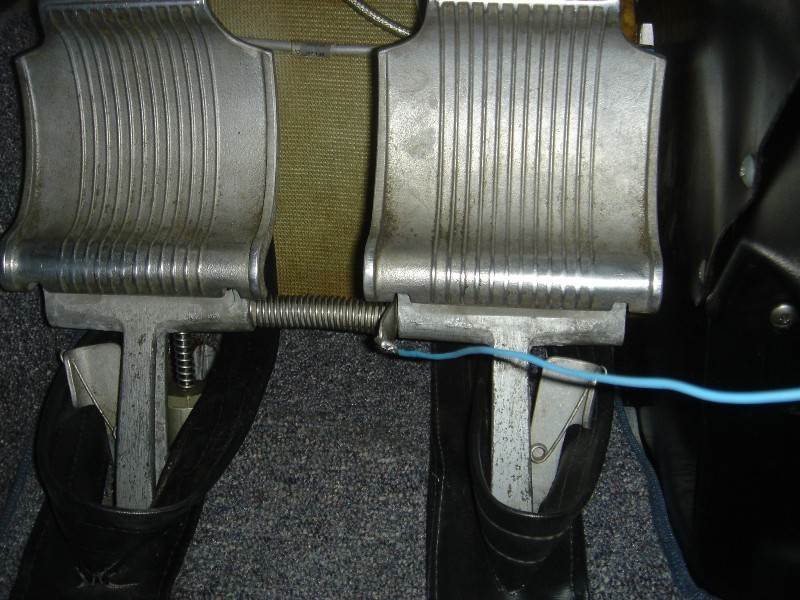
Here is my Hobby Shop black paint
touch up of my engine control arms and magneto switches. A $2 little bottle of
hobby paint and some small modeling brushes got these results


PS: The nose steering of my B55 has
two
springs in the steering rod that allows the aircraft to be towed while the rudder
gust lock pin is in place. Nice thinking on the part of those Beech engineers!
Just in case you're searching for
a control lock and come across one that looks like the one pictured below, this
would be the factory control lock for the Bonanza A36 and B58 Baron airframes
made from 1984 and onward.
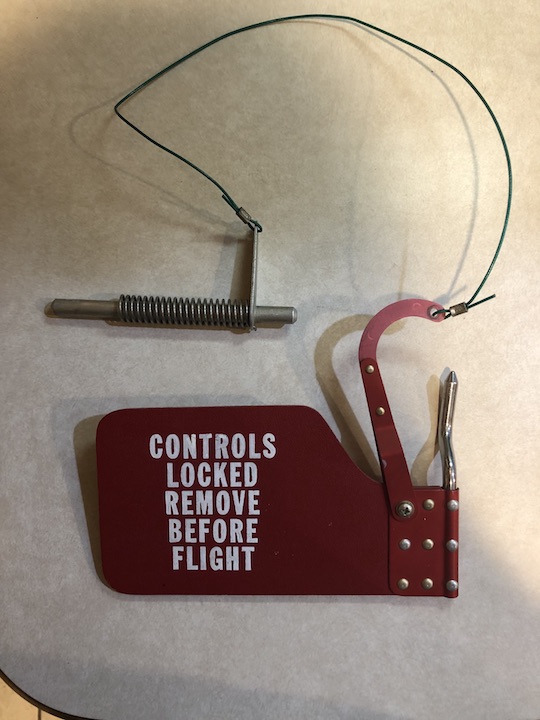
Below would be an example of the factory control
lock for the late model Bonanza 35.
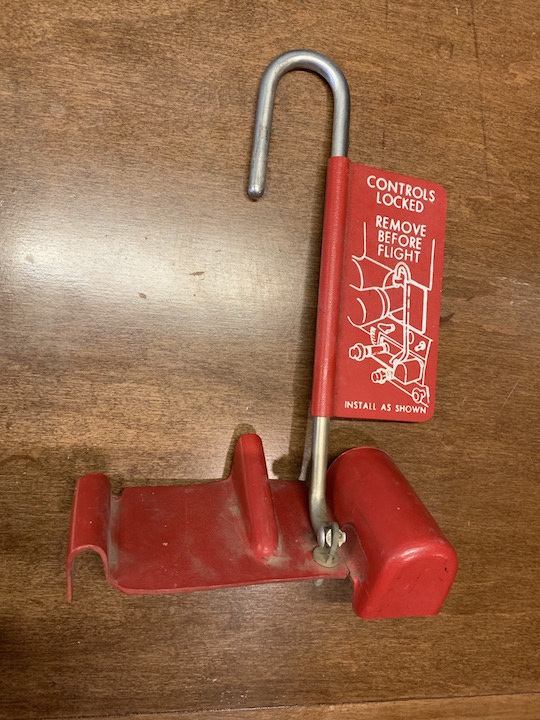
Here is Eric's CSOB Rudder Gust Lock
Pin design pirep:
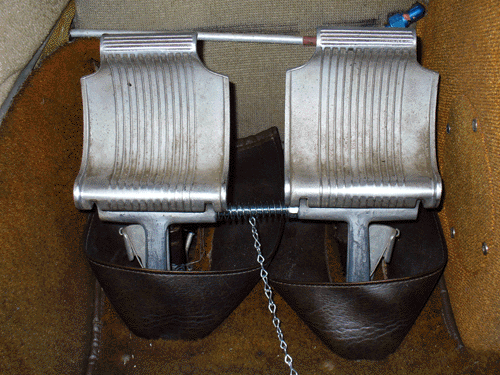
As I had mentioned before, I need a rudder/pedal lock for my
Debonair which is parked outside at a tie-down (can't quite afford the
$500/month for the hangar locally). I made my CSOBeech gust lock, but wanted the
safety of the accompanying rudder lock... and I found a solution for less than
$5 worth of hardware available at Lowe's:
6" piece of 3/8"-16 Threaded Rod (Hillman #881001) = $0.92
Spring - 11/16"x3"x.062" (Hillman #543025) = $1.87 ($3.75 for two-pack)
3/8"-16 nylock nut $0.17
3 feet of chain @ 0.50/ft = $1.50


All you need to do is...
1) Thread the nut onto the threaded rod and leave about 1-3/8"
of rod on the FLAT end of the nut.
2) Attach the spring to the nut.
3) Attach one end of the chain to the spring
4) Attach the other end of the chain to the gust lock's REMOVE
BEFORE FLIGHT flag
After installation, I went back to the rudder and gave it a
test. While looking down at the tailcone and deflecting the rudder I could only
get 2-to-3 fingers deflection (about 2") each way!! This will help a lot, as the
local flight school students NEVER yell "clear" before starting so I never get a
warning that the blast is coming. And they NEVER pull the plane out; they just
fire it up while sitting in the space and firewall it to get moving (!!??!!).
*Helpful Hints*
The distance between my pedals is right at 3", so I figured
I'd center the spring on the rod and have 1-1/2" rod inside each pedal. What I
didn't do was figure the amount of rod the nut would occupy. The spring gets
kind of tight at that set-up so I adjusted it about 1/8" so that there is around
1-3/8" rod on one end.
Because it's a nylock nut and I'm also a lazy SOB, I didn't
want to thread it all the way down. I started the nut until the nylon was
engaged in the threads for a couple of turns, then took it off, turned it around
while the nylon was still holding the thread impression and brought it to the
correct length. I held the center of the rod with pliers and used a box-end
wrench to spin the nut into place.
As luck would have it, the spring nests very nicely on the
raised portion of the nylock nut. The spring was a little loose on the nut, so I
took a pair of pliers and gave the end of the spring a little "squeeze" to
narrow the opening a bit until it would grab the nut tightly Now they are like a
single unit. You may be able to find a 5/8" spring that will grab the nut
without the adjustment.
The chain just loops onto the spring, like putting a key on a
key ring.
Thanks for helping me find my inner CSOBeech!
-Eric I., CA
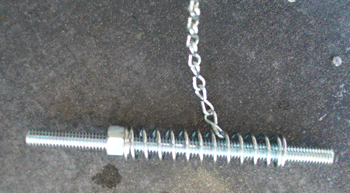
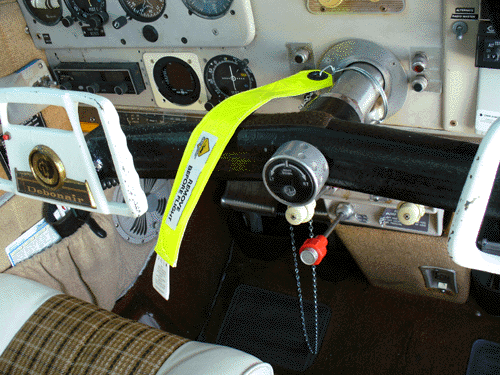
Thanks Eric for your CSOBeech contribution!

|